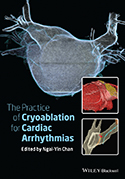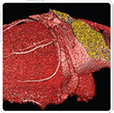
The Practice of Catheter Cryoablation for Cardiac Arrhythmias
Edited by Ngai-Yin Chan


Cases
Case 6.1. Prevention of phrenic nerve palsy during cryoballoon ablation for atrial fibrillation
A 67-year-old man with a previous history of coronary artery disease with preserved left ventricular (LV) function, coronary artery bypass grafting (CABG) 5 years ago, and paroxysmal highly symptomatic atrial fibrillation who had failed previous antiarrhythmic therapy is referred for possible ablation. Patient complains of significant shortening of breath with exercise since CABG. He denies history of smoking or prior respiratory disease. However, after his surgery, the patient remained intubated for 2 weeks. Currently he denies chest pain, cough, fever, or syncope. His physical exam is unremarkable except for decreased breathing sounds on the left.
-
1. What is the best next test prior to cryoballoon ablation – pulmonary function test, chest X-ray, stress test, computed tomography (CT) of the chest, or proceed directly to cryoballoon ablation?